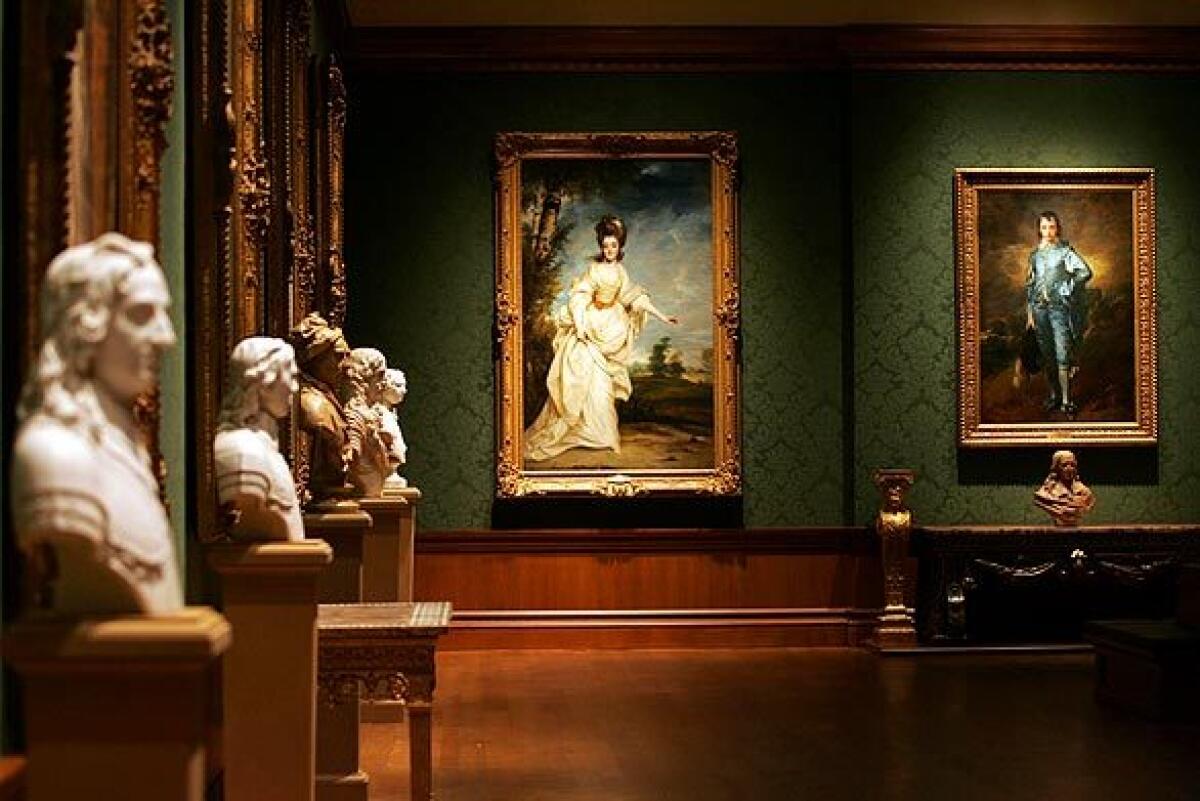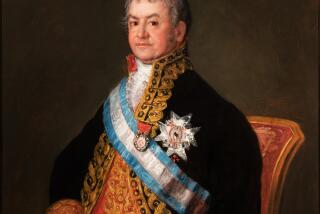Huntington Library and Art Museum lays off 8, including a chief curator

- Share via
The Huntington Library, Art Museum and Botanical Gardens is laying off eight employees, including the chief curator of European art, as part of belt-tightening during the COVID-19 pandemic.
The Huntington’s collection of European art from the 15th to the early 20th century — particularly 18th and 19th century British painting — is a standout at the San Marino institution, which also features a renowned collection of American art from the late 17th to the mid-20th century.
The chief curator of European art is Catherine Hess, who has been at the Huntington for 12 years. The Huntington’s vice president of communications and marketing, Susan Turner-Lowe, refused to say whether Hess is being laid off or whether the museum was eliminating her position, but when reached by phone Hess confirmed her departure and said Sept. 1 will be her last day. She declined further comment.
Turner-Lowe would say only that “a staff position in the European area of the museum” had been eliminated. The associate curator of British art, Melinda McCurdy, and the chief curator of American art, Dennis Carr, are still employed. The Huntington’s director of art collections, Christina Nielsen, declined to comment.
The eight staffers who are being laid off, plus four who are being furloughed, come from across the library, education, art, communications and advancement departments. About 20 open positions have been temporarily frozen at the Huntington, which said it employs about 500.
The Huntington — which is nearing the end of a yearlong centennial celebration — is one of the wealthier cultural institutions in Southern California, with a $51-million annual operating budget and an endowment that was $500 million as of January.
Like almost all museums, however, it has been hit hard by prolonged pandemic closures and thinning revenue streams. A third of its operating budget comes from admissions, food services, retail and facility rentals, a third comes from donors, and a third comes from income from the endowment, which dropped 11% between January and March, Turner-Lowe said.
Projections for the current fiscal year, which runs through June 30 and factor in a possible second wave of the virus and a new round of closures, are grim: an estimated 70% drop in admissions, a 41% drop in general membership, a 52% drop in food services and facility rental income, and a 31% drop in retail sales. That adds up to a loss of about $800,000 a month, Turner-Lowe said.
Even though the Huntington reopened outdoor areas to the public on July 1 after having been closed since mid-March, the institution is operating at only about a third of capacity to allow for social distancing.
Other changes have been underway since Nielsen took her position in September 2018. Kicking off its centennial celebration in September 2019, the Huntington officially changed its name, swapping out the stuffier-sounding “art collections” with the more accessible and SEO-friendly “art museum.”
“The idea of ‘collections’ seems rather private sometimes,” Huntington President Karen R. Lawrence said at the time, “and ‘museum’ is clearly legible to the public that you’re invited to come, and we have exhibitions and talks and interactions with the collections.”
The Huntington has also made forays into contemporary art. It’s co-presenting the Hammer Museum’s biennial “Made in L.A. 2020: a version” this year. The opening date, initially set for June 7, is now in limbo as indoor museums wait for reopening guidelines from the state. Coronavirus closures have wreaked havoc on exhibition planning, Turner-Lowe said, and the Huntington expects to present fewer exhibitions over the next two years.
But even as it pares back, the Huntington — which doesn’t employ any people of color in key leadership positions — is prioritizing accessibility and diversity going forward, Turner-Lowe said. On July 1, after the killing of George Floyd, the Black Lives Matter protests and a racial equity reckoning at cultural institutions nationwide, the Huntington launched its Diversity, Equity and Inclusion Strategic Plan for 2020-25, which set goals for enforcing those values in all areas of the institution, including exhibition planning, the visitor experience and hiring.
The layoffs, Turner-Lowe said, are “absolutely not” an effort to increase diversity on staff.
The Huntington is pushing forward with digitizing rare manuscripts, historical correspondence, art prints and other works on paper from its library collection of about 11 million objects to make them more accessible, online, to scholars and the general public.
“It’s also important to note that even while we are tightening up in some areas, we have to be mindful of an important part of our institutional mission — to preserve and exhibit the collections for the benefit of the public and the scholarly community,” Turner-Lowe said. “Investing in and leveraging technology to provide wider access to our collections is key, and we will continue to prioritize that area. Much of this was already underway but has been accelerated by the pandemic.”
More to Read
The biggest entertainment stories
Get our big stories about Hollywood, film, television, music, arts, culture and more right in your inbox as soon as they publish.
You may occasionally receive promotional content from the Los Angeles Times.











